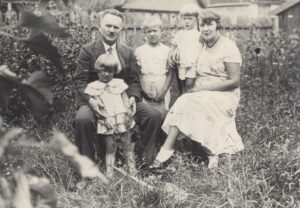
Józef Kubala’s family from Wasilków was deported to Kazakhstan on 13 April 1940, at the same time the Soviets murdered Józef in Katyn. Photo from the family archives at the Sybir Memorial Museum.
On the morning of 13 April 1940, NKVD soldiers came banging on the doors of the homes of more than 60,000 residents of eastern Poland. They ordered them to pack quickly and loaded them into cattle wagons.
This was to be expected, as only two months earlier the Soviets had kidnapped more than 140,000 military and civilian settlers, foresters and their families from the occupied Kresy (Poland’s Eastern Borderlands) and deported them to slave labour: logging the taiga and working in mines. These people were deported because they were believed to be dangerous and could organised a strong and effective partisan movement. But the key to the April deportation was different: about 70% of those deported were women, children and old people. How could they threaten the mighty Soviet empire? Indeed, on 5 March 1940, three days after the Soviet Party’s Political Bureau decided to deport them, the same group decided to murder 22,000 Polish officers – prisoners of war and detainees. The link between these two decisions was close, as the women, children and old people were family members of those murdered in the Katyn Massacre. In this way, the Soviets wanted to prevent them from claiming their husbands, fathers and sons, and at the same time erase their memory. This perfidious plan failed: first, in June 1941, the Germans invaded the Soviet Union and, frightened by their rapid march eastwards, Stalin decided to agree with the Poles and released the deportees from their places of imprisonment. Then, less than two years later, the Germans discovered and revealed the Katyn graves. In this way, the crime saw the light of day. But for the next 50 years after the war, the Katyn families had to remain silent about the tragedy of the deportation and the death of their loved ones.
To commemorate all those murdered by the NKVD in Katyn, Kharkiv and Mednoye, and in other places of execution, the Sejm of the Republic of Poland, in a resolution adopted by acclamation in November 2007, established April 13 as the Day of Remembrance for Victims of Katyn Massacre.



